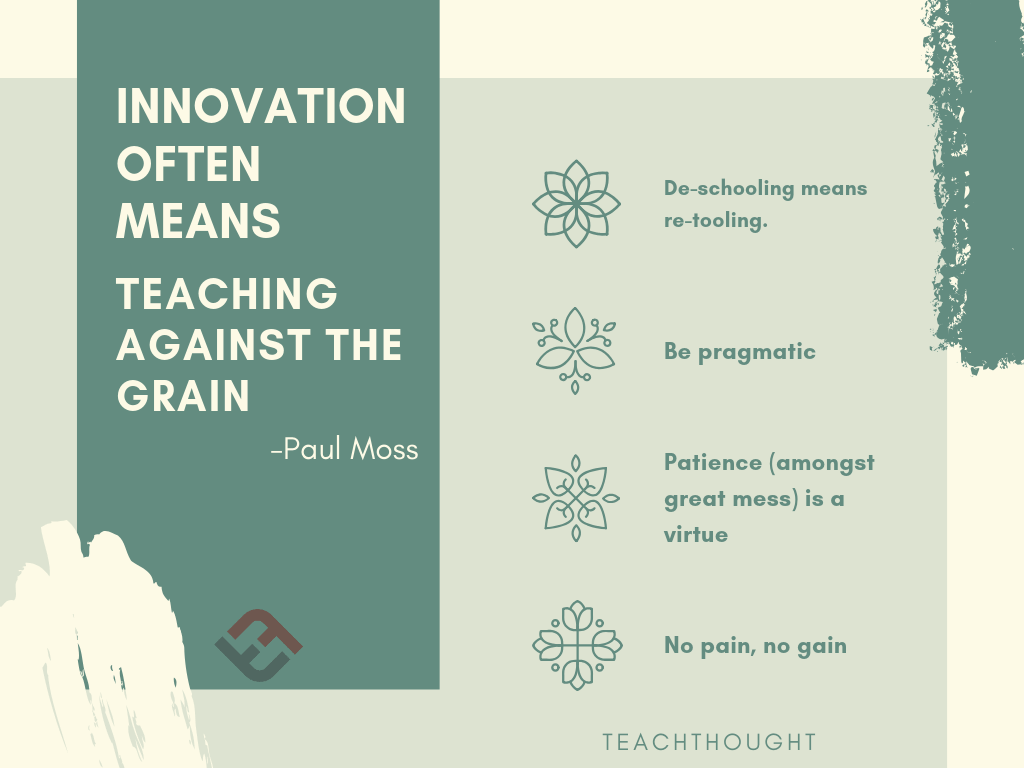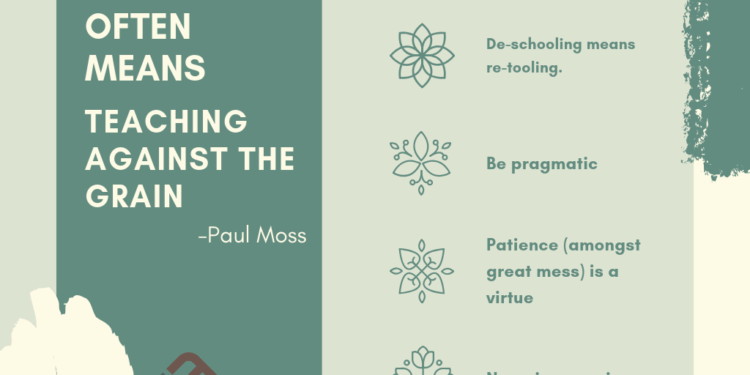

by TeachThought Staff
Recently I came across this interesting article: Shifting from Pedagogy to Heutagogy and whilst espousing all contained within, it got me thinking about the inescapable perils faced when adopting this and other progressive forms of teaching.
Going against the grain can be a lonely experience at times, and whilst sound theory and instinct act as a nice warm blanket against the cold, one could well do with a practical survival guide to assist in implementing new practice. Teachers need to be prepared for the reality of what lies ahead of them to assist in the reshaping of their classrooms, and to ultimately strengthen their resolve in maintaining the chosen epistemology.
Most progressive teaching models from Heutagogy, Constructivism, to PBL concern themselves essentially, as much as possible, with placing the process and outcomes of learning in the hands of the learner. But let’s cut to the chase here, implementing such pedagogy is very messy, requires enormous patience, a degree of pragmatism, and most importantly, needs a teacher of great skill who can de-school their students to engage with it.
See
1. De-schooling means re-tooling.
When shifting your teaching practice to a style that centers itself more on the learner and less on the teacher, be prepared for many students (and parents) to vehemently complain that you are not teaching them, and the inevitable confidence killing that these savage claims create. Never is this feeling stronger when you have students of good ability beginning to complain. In these times it can seem as though you are robbing Peter to pay Paul, but in order to counter such occasion, ensure you have a very well thought-out plan and rationale that can be defended in case your line manager decides to investigate their ire, and more importantly, one that you can talk yourself through in predictable moments of doubt.
Always remember what constitutes real learning, and you’ll be fine.
2. Be pragmatic.
Having said that, it would be wise to initiate the students with small doses of the new style, easing them in to what can be for many an uncomfortable territory. Imagine the look on most students’ faces if you begin the unit by saying ’Ok, here are the outcomes you need to achieve by the end of the unit, but you design the learning to achieve it.’ This is not just throwing students into the deep end. This is dropping them out of a helicopter into the middle of the ocean.
You need to set up the space, set up the culture for them to succeed in: how to research, how to work cooperatively, how to set incremental goals, how to manage time, how to work independently. Remember, by the end of high school, students have had up to 11+ years of teacher-led learning, and as they get older, have been told probably thousands of times how important it is to achieve a certain grade, a grade which may seem in jeopardy without the strong lead of the teacher.
This blending is exactly what I find myself doing. I always begin a unit with a strong learner-based approach, and slowly incorporate a much more guided flow towards the end as we approach assessment. No matter what anyone says, it is at the end of the unit that we have to be pragmatic: students will be tested on specific learning outcomes, and there’s a lot at stake for me as a teacher if they aren’t met. The overall aim however is to continually manipulate the ratio in favor of learner-based learning.
3. Patience (amongst great mess) is a virtue.
This is where lots of patience comes in. With some groups, it may take much much longer to make it standard practice. You have to remember that to achieve success with student-centered learning is by no means an easy feat, and so you must be patient with yourself as you try to get it right. You have to be especially patient with the messiness of it all.
The messiness can be overwhelming at times, particularly with learners who have been largely disconnected to learning. For them, it can seem like a free ride, a chance to do nothing, and the compulsion to manage and structure such occasions by reverting to old tricks is strong. In such instances, guidance and coercion down a certain path may be the only chance of keeping the dream alive. But this needn’t mean that it has to be completely teacher-led. Ensuring students arrive at an end outcome doesn’t mean that there is only one way to get there.
Sensible bridging strategies are not compromises, but smart decisions made to stay afloat.
4. No pain, no gain.
If it all sounds quite daunting, that’s because it is. But we shouldn’t expect any less, because after all we are talking about perfecting teaching models that take a teacher to the top of the game. The number of times I’ve fallen off the wagon are too countless to name, but I always return, knowing that the learning is significantly stronger and that ironically, eventually the compulsory testing yields better results.
But more than that, I keep returning because when it works, the feeling that I get observing students learning for themselves and assuming ownership of their experience is one of pure joy, and always confirms why I love education.
Adapted image attribution flickr user Dan; Innovation Often Means Teaching Against The Grain




















